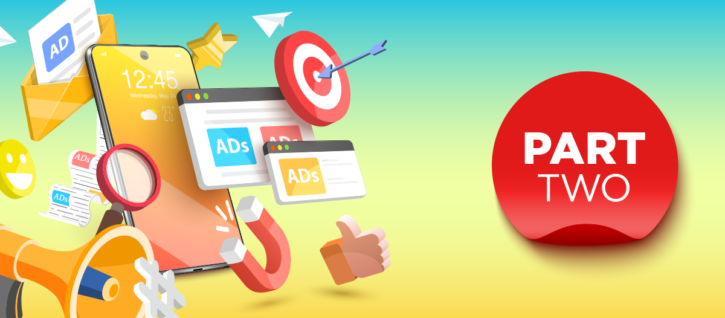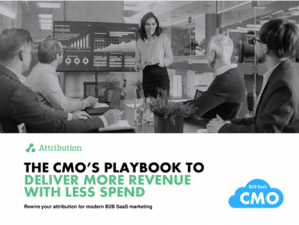Recent Posts
- How to Drive More Impactful Commerce Experiences with Shopify and Twilio Segment
- Why understanding the buyer’s journey is so important
- Revolutionizing Marketing Analytics! Announcing CallRail Integration with Attribution!
- Attribution Named High Performer in G2’s Spring 2024 reports for Attribution Software
- Optimize ROAS with Attribution’s enhanced integration with Segment

The Secret to Google Ads Success, Part 2
By David Saxon
How advertisers can make the most of the platform
As we’ve explored in the last article in this series, Google has been shifting its advertising approach over the past several years. Rather than providing more granular flexibility, they have focused on more automation, and a more artificial intelligence-driven approach, while addressing growing privacy concerns from consumers. Both of these add up to a set of challenges for advertisers and marketers as they use Google Ads to reach their audiences.
In this article, which is the second part of a 3-part series, we’re going to discuss some of the challenges that Google’s approach poses for advertisers, and what you can do about it in order to get the best results.
The Challenge for Advertisers and Marketers
As described earlier, both privacy considerations and an increased reliance on AI not user input have changed how Google Advertising works. This gives advertisers and marketers less control how they target their audiences and spend their marketing dollars and puts a lot more control in the hands of Google’s tools.
While Google’s evolution to a more AI-driven approach through their Smart Bidding features has simplified things for many marketers, it has also caused other unforeseen issues because the attribution methods Google uses are only as good as the data sources they receive.
For instance, using a “first touch” attribution model alone won’t take into account anything after the initial interaction that a potential customer had with your brand. In a lot of cases, an advertisement drives a lot of traffic to your site but doesn’t translate into any sales. This could be that the keywords used are bringing in the wrong audience, or because there are other elements in your sales process that might identify a marketing qualified lead (MQL) yet reject them as a sales qualified lead (SQL) once you learn more about their budget or other needs.
As you probably well know, the solution isn’t simply to abandon Google because it doesn’t give you the flexibility you need. Instead, the challenge for advertisers and marketers is to find ways to work with Google’s increased automation and its reduced flexibility. There’s one major way you can do this, which we’ll explore next.
Better Data is the Solution
One thing is for sure: Google is not going to go “backwards” and offer less consumer privacy to third parties, nor will they rely less on AI and other automated solutions. It stands to reason that they will only continue to move in both of these directions.
While for some marketers, the remedy to this solution is to simply let Google do its thing and automate all of your advertising on their platform, but that doesn’t work for everyone. If your advertising needs and audiences are nuanced and require a greater understanding of details, you can’t simply let Google’s automated solutions spend your advertising dollars without having a little more control.
The way to get better results as a more sophisticated advertiser is to have strong data that can provide Google with the best possible conversion data inputs. This can be more important even than having better keywords or landing pages.
A great way to have better data is to use a tool like Attribution that shows Google where your best traffic is coming from. This lets Google’s AI tool, which is becoming more and more opaque in how it operates, to work its magic. Having the best possible data hygiene is your best bet to get better results from your Google Advertising, though.
The solution to all of this is to get the best possible data in the first place, which includes more than just the first touch or last touch that you have with a customer, but everything in between. This multi-touch attribution is where tools like Attribution can be incredibly helpful, since these tools can give you (and Google) the information needed to feed the most accurate and helpful data, ensuring greater success.
Understanding how Google has evolved, and the best ways to utilize that to your advantage can mean the difference between middling results and thriving in this new world of Google advertising.
Coming up next in the third and final part of this series, we’re going to explore some of the implications of Google’s changes on Business to Business (B2B) advertisers, where some of the challenges can be most extreme.
For more information, read more about Attribution or contact us.

